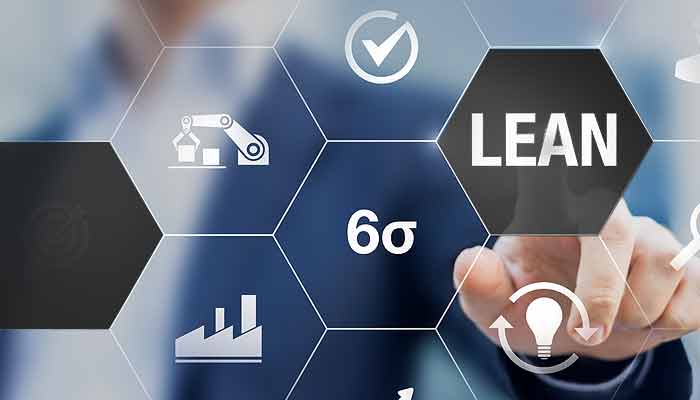
- Curriculum Overview:
____________________ - Define Phase:
- Identifying project opportunities
- Understanding customer requirements (Voice of the Customer)
- Project Charter creation and defining project scope
- Understanding Key Performance Indicators (KPIs)
- Measure Phase:
- Introduction to process mapping and flowcharting
- Basics of data collection, types of data
- Introduction to basic statistics (mean, median, mode, range) o Understanding process capability and performance
- Analyze Phase:
- Root Cause Analysis (5 Whys, Fishbone Diagram)
- Introduction to basic hypothesis testing
- Process bottleneck identification
- Improve Phase:
- Brainstorming improvement ideas
- Lean principles to reduce waste
- Introduction to Kaizen and quick wins
- Control Phase:
- Process control basics
- Monitoring and sustaining improvements o
- Introduction to Control Plans

- Curriculum Overview:
____________________ - Define Phase:
- Project selection and prioritization o Voice of the Customer (VOC) and translating it into Critical to Quality (CTQ) requirements
- Project management tools (Gantt charts, RACI)
- Introduction to Stakeholder Analysis
- Measure Phase:
- Process mapping (SIPOC, Value Stream Mapping)
- Data collection planning and measurement systems analysis (MSA)
- Descriptive statistics, process capability (Cp, Cpk)
- Process variation analysis
- Analyze Phase:
- Advanced Root Cause Analysis (Pareto Analysis, Regression)
- Hypothesis testing and correlation analysis o Introduction to Failure Modes and Effects Analysis (FMEA)
- Value-add and non-value-add activity identification
- Improve Phase:
- Brainstorming and prioritization techniques
- Lean tools for waste reduction (5S, Kanban, Poka-Yoke)
- Experimentation techniques and design of experiments (DOE) introduction
- Cost-benefit analysis of improvement initiatives
- Control Phase:
- Statistical Process Control (SPC)
- Control plans and visual management o Standard work documentation
- Knowledge transfer and sustaining improvements

- Curriculum Overview:
____________________ - Define Phase:
- Comprehensive project selection aligned with business goals o
- Advanced VOC analysis and CTQ flowdowns
- Financial benefit analysis and building business cases for projects
- Advanced stakeholder management and engagement techniques
- Measure Phase:
- Detailed process analysis, Value Stream Mapping, and Time Value Maps
- Advanced Measurement System Analysis (Gauge R&R)
- In-depth process capability studies, including short-term and long-term capability indices
- o Complex data collection methods, sampling plans, and data integrity checks
- Analyze Phase:
- Multivariate data analysis o Advanced hypothesis testing (ANOVA, Chi-square)
- Regression analysis (simple and multiple regression)
- Failure Mode and Effects Analysis (FMEA) with Risk Priority Number (RPN) analysis
- Root Cause Analysis using advanced tools (Fishbone, 5 Whys, Affinity Diagrams)
- Improve Phase:
- Design of Experiments (DOE) and Optimization
- Lean tools integration for comprehensive process improvement (Value Stream Mapping, JIT, 5S)
- Error-proofing techniques (Poka-Yoke) o Implementation of advanced Lean Six Sigma tools for problem-solving (Kaizen, Heijunka, SMED)
- Control Phase:
- Advanced Statistical Process Control (SPC) and process monitoring
- Developing robust control systems to sustain improvements
- Change management strategies to ensure process adoption
- Creating dashboards and scorecards for process performance tracking
Curriculum Overview:
____________________
- Module 1:
- Introduction to Robotics Process Automation
- Defining RPA: Overview and its significance in the modern enterprise
- Role of an RPA Consultant vs. RPA Developer
- Real-world RPA applications across sectors (finance, healthcare, manufacturing)
- Key benefits, challenges, and ROI of RPA implementation
- Module 2:
- Understanding the RPA Ecosystem
- Overview of leading RPA tools (UiPath, Blue Prism, Automation Anywhere)
- Components of RPA platforms: Bots, Orchestrator, Process Designer
- Differences between RPA, AI, and traditional automation
- Key phases in the RPA project lifecycle
- Module 3:
- Process Identification and Selection for RPA
- Criteria for identifying and selecting processes suitable for automation
- Techniques for process mapping and documentation
- Business process analysis for automation feasibility
- Practical exercise: Analyzing sample business processes to assess RPA suitability
- Module 4:
- Designing an RPA Implementation Strategy
- Developing an RPA roadmap for businesses
- Prioritizing processes and planning RPA projects
- Stakeholder management and aligning automation goals
- Hands-on exercise: Creating a high-level RPA strategy for a sample organization
- Module 5:
- RPA Change Management and Governance
- Change management in RPA deployments & managing employee engagement
- Establishing governance frameworks and compliance standards
- Managing bot lifecycles, exceptions, and continuous improvement
- Hands-on exercise: Building a change management plan for an RPA rollout
- Module 6:
- AI and ML in RPA
- Introduction to AI/ML capabilities within RPA
- Integrating RPA with AI for advanced automation (e.g., OCR, NLP, etc.)
- Hands-on exercise: Analyzing a case study involving AI-enhanced RPA
- Module 7:
- Measuring RPA Success and KPIs
- Setting KPIs and key metrics for RPA project success
- Evaluating RPA performance: cost savings, efficiency gains, and error reduction
- Building a business case for RPA and quantifying ROI
- Practical exercise: Drafting an RPA project report and ROI analysis
- Module 8:
- Ethics, Security, and the Future of RPA
- Ethics in automation: considerations for workforce impact and privacy
- RPA security best practices, risk management, and data compliance
- Emerging trends like Hyper-automation and Intelligent Automation
- Advanced VOC analysis and CTQ flow-downs
- Financial benefit analysis and building business cases for projects
- Advanced stakeholder management and engagement techniques
